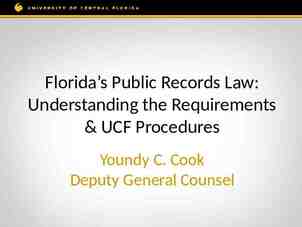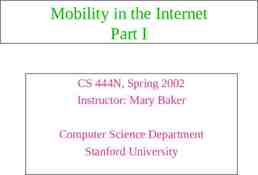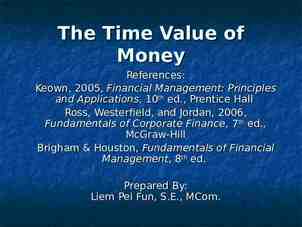Professional Codes of Ethics Module Three| Lesson One
11 Slides191.90 KB

Professional Codes of Ethics Module Three Lesson One

Lesson One Introduction Lesson Overview Values and ideals: Basis for ethical codes History of codes of ethics Roles and responsibilities of codes of ethics Concerns about codes of ethics

Lesson One Introduction Definitions Values: qualities and characteristics that a culture holds valuable Ideals: cultural expectations for an ideal type of person Principles: directives on how a person should act based on values and ideals

Lesson One Introduction Definitions Code: a somewhat formal system of behavior that advises people on how to behave Policies: system of directives that controls behavior within some sort of institution Laws: formalized guidelines for behavior with a structure for enforcement and clear penalties for violations

Lesson One Introduction Discussion Question #1 What are some things that we identify as ideals and values in our university community, and how do those influence university policies?

Lesson One Introduction History of Codes of Ethics Formalized codes began to appear in the 1980s – Often as a response to corporate wrongdoing Early codes were sparse; more recent ones are more robust Codes are situational depending on organization and industry

Lesson One Introduction Roles of Codes of Ethics Codes perform a number of functions – Guide appropriate behavior – Prevent harm to others (via unethical behavior) – Set standards for ethical behavior that allow people to identify (and report) unethical behavior – Generate goodwill among employees by promoting ethical behavior and high standards

Lesson One Introduction Communicating Codes of Ethics Schwartz (2001): People can perceive codes in a number of ways. – Guidance (rule-book, signpost) – Warning (smoke detector, fire alarm) – Protection (shield) – Self-awareness (mirror, magnifying glass) – Enforcement/punishment (club)

Lesson One Introduction Discussion Question #2 Of the eight metaphors identified by Schwartz (rule-book, signpost, smoke detector, fire alarm, shield, mirror, magnifying glass, club) , which do you think is most appropriate to describe the ideal role of the code of ethics?

Lesson One Introduction Concerns about Codes of Ethics Often not well-known Do not provide guidance in all situations – In fact, often subject to interpretation that leads to inconsistent ethical behavior May not be followed by employees May only serve to bolster public image of a company or organization

Lesson One Introduction Discussion Question #3 What is the value of a code of ethics to the individual practitioner in his/her work? How can a code of ethics benefit a profession overall?






